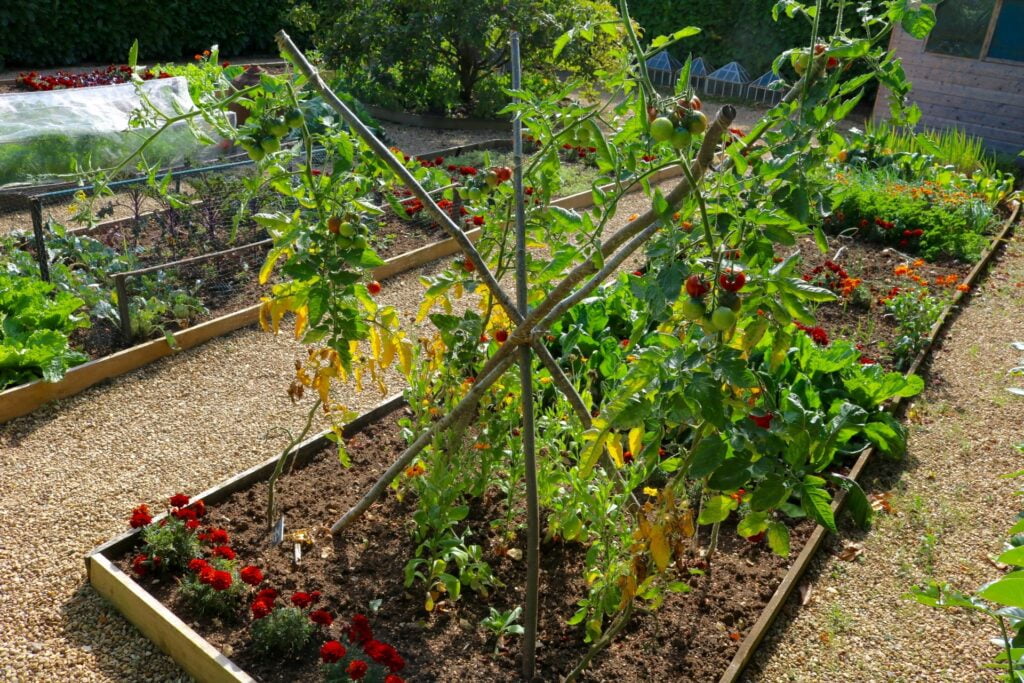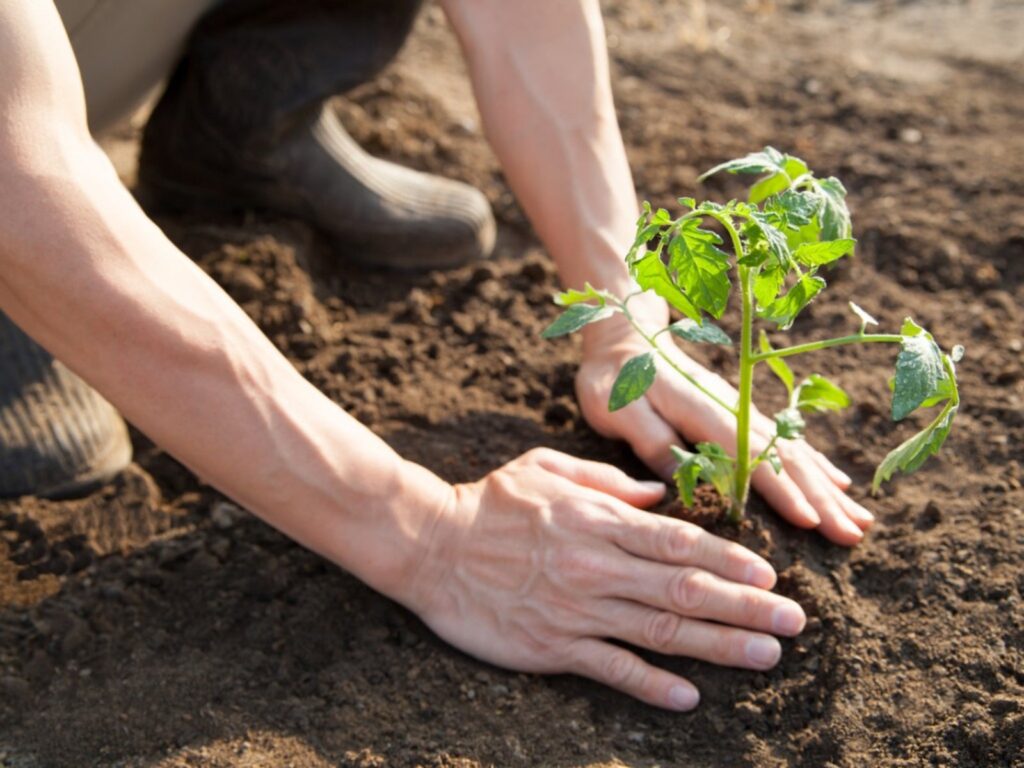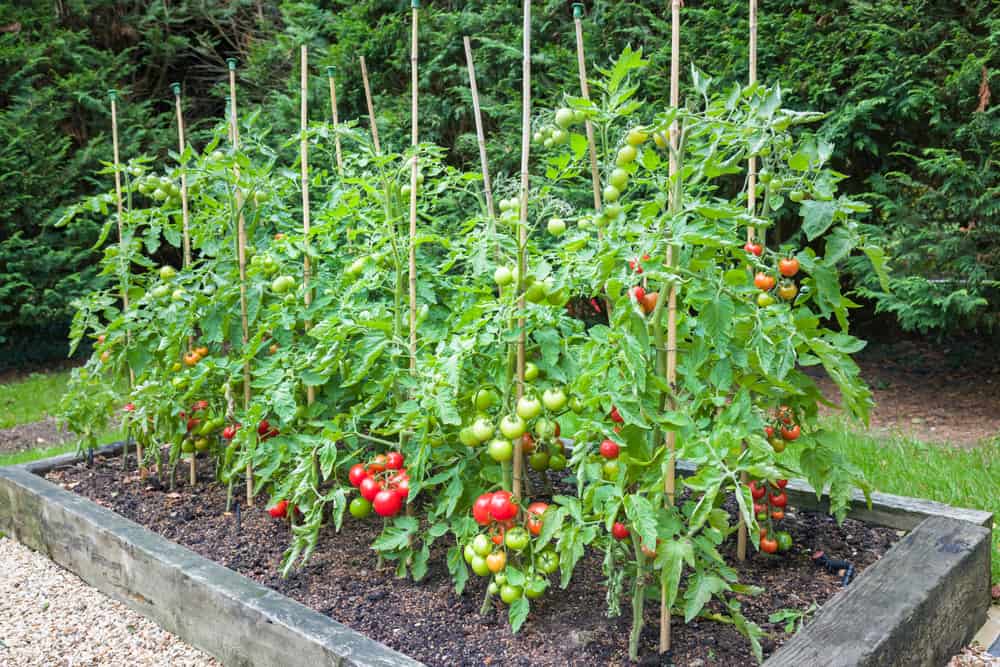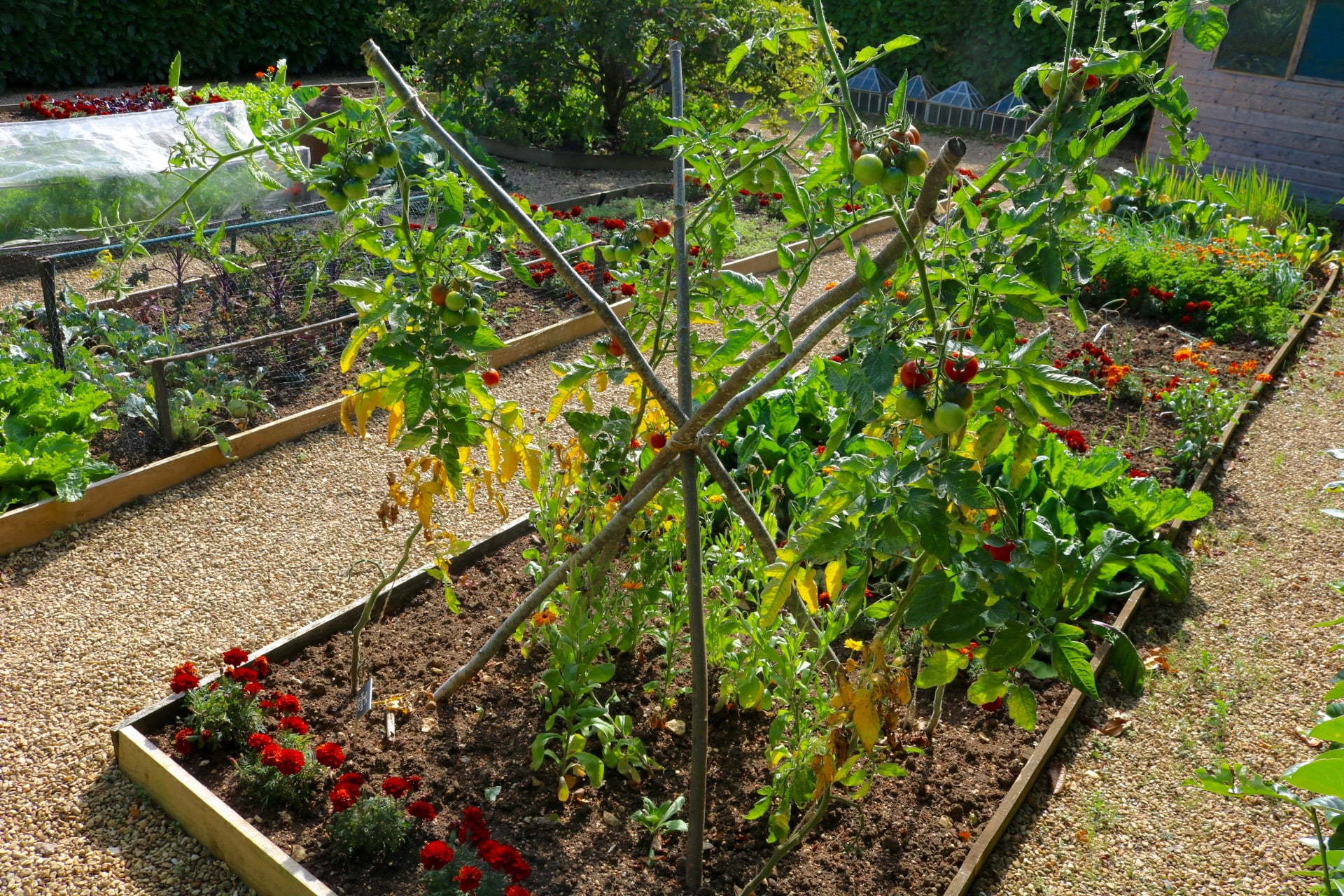In the pursuit of cultivating a flourishing tomato garden, one fundamental question prevails: when is the optimal time to transplant these delightful fruits into the great outdoors? Harnessing the wisdom of horticultural expertise, this article delves into the art of tomato gardening, exploring the key factors that dictate the ideal planting window. By examining crucial elements such as frost dates, soil temperature, and regional climate variations, you will gain invaluable insights to determine precisely when to sow your tomato seeds in the fertile ground, ensuring bountiful yields and a gratifying gardening experience.

Factors to Consider
Climate Zone
When deciding when to plant tomatoes outside, one of the most important factors to consider is the climate zone in which you live. Different tomato varieties have different temperature requirements, so understanding your climate zone will help you determine the appropriate timing for planting. Tomatoes are warm-season crops that thrive in areas with a long growing season and plenty of sunshine. If you live in a region with short, cool summers, you may need to start your tomato plants indoors or consider planting early-maturing varieties to ensure a successful harvest.
Last Frost Date
Another factor to consider when planning to plant tomatoes outside is the last frost date in your area. Tomatoes are highly susceptible to frost damage, and planting them too early can result in stunted growth or even death of the plants. The last frost date is the estimated date in spring when the risk of frost is minimal, and it varies depending on your location. Consult your local agricultural extension office or use online resources to determine the last frost date in your specific area. It is generally recommended to wait until after the last frost to plant tomatoes outside.
Soil Temperature
Soil temperature is also crucial when deciding when to plant tomatoes outside. The ideal soil temperature for tomato seed germination and growth is between 60 and 85 degrees Fahrenheit (15 to 29 degrees Celsius). Planting tomatoes in soil that is too cold can result in slow or uneven germination, as well as poor root development. To ensure the soil is warm enough for planting, use a soil thermometer to measure the temperature at a depth of 4 to 6 inches (10 to 15 centimeters). Wait until the soil consistently reaches the desired temperature before planting your tomatoes.
Preparing the Soil
Clearing the Area
Before planting tomatoes outside, it is essential to prepare the soil to create an optimal growing environment. Start by clearing the area of any weeds, rocks, or debris. Weeds can compete with tomato plants for nutrients and water, so removing them before planting will give your tomatoes a better chance of thriving. Clearing the area also helps prevent disease and pest infestations, as it eliminates potential hiding places and breeding grounds for pests.
Amending the Soil
Once the area is cleared, it is important to amend the soil to improve its fertility and structure. Tomatoes are heavy feeders and require nutrient-rich soil to grow healthy and productive. Conduct a soil test to determine the pH level and nutrient content of your soil. Based on the results, you may need to adjust the pH using lime or sulfur and add organic matter, such as compost or well-rotted manure, to improve the soil’s fertility. Incorporating organic matter will also enhance the soil’s moisture retention and drainage capabilities.
Adding Organic Matter
Adding organic matter is an essential step in preparing the soil for tomato planting. Organic matter improves soil structure by promoting air circulation and water retention, creating an environment that is favorable for root development. It also provides a slow-release source of nutrients for the plants. Mix in a generous amount of compost or well-rotted manure to the top 6 to 8 inches (15 to 20 centimeters) of soil. Work the organic matter into the soil thoroughly, ensuring an even distribution. This will help create a nutrient-rich and well-draining soil for your tomato plants.

Choosing Tomato Varieties
Determining Growth Habit
When choosing tomato varieties for outdoor planting, it is important to consider their growth habits. Tomatoes can be classified as determinate or indeterminate, and each type has its own advantages and considerations. Determinate varieties grow to a certain height and set fruit all at once, making them suitable for gardeners with limited space or those looking to harvest a large crop for preservation. Indeterminate varieties, on the other hand, continue to grow and produce fruit until frost and require staking or support. Consider your space limitations and preferred harvesting style when selecting tomato varieties.
Evaluating Disease Resistance
Tomatoes are susceptible to various diseases, including blight, wilt, and leaf spot. When choosing tomato varieties, it is wise to select those with disease resistance to minimize the risk of crop loss. Look for varieties that are resistant to common tomato diseases prevalent in your region. Disease-resistant varieties have been bred to possess specific genes that provide resistance against certain pathogens. While disease-resistant varieties are not immune to diseases, they have a higher chance of surviving and producing a good harvest, even in the presence of disease-causing organisms.
Considering Maturity Time
The time it takes for tomato plants to mature and produce ripe fruit varies among different varieties. When selecting tomato varieties for outdoor planting, it is crucial to consider their maturity time. Some varieties produce fruit within 60 to 70 days of planting, while others may take up to 90 days or more. If you live in a region with a short growing season, choose early-maturing varieties to ensure a successful harvest before the first frost. If you have a longer growing season or use protective measures like row covers, you can opt for mid- to late-season varieties that offer different flavors and attributes.
Starting Seeds Indoors
Timeline for Starting Seeds
Starting tomato seeds indoors is a popular method for getting a head start on the growing season and ensuring healthy seedlings. The ideal timeline for starting tomato seeds indoors depends on your climate zone and the estimated last frost date. Generally, tomato seeds are sown indoors 6 to 8 weeks before the last frost date. This provides enough time for the seeds to germinate and develop into sturdy seedlings ready for transplanting. Consult a planting calendar or your local agricultural extension office to determine the appropriate timing for starting tomato seeds indoors in your area.
Seedling Care and Transplanting
While the tomato seeds are germinating and seedlings are growing, proper care is essential to ensure their health and vigor. Provide adequate light, either through natural sunlight or artificial grow lights, to prevent leggy seedlings. Maintain a temperature of around 70 to 75 degrees Fahrenheit (21 to 24 degrees Celsius) during the day and slightly cooler at night. Water the seedlings regularly, keeping the soil moist but not waterlogged. As the seedlings grow, gradually acclimate them to outdoor conditions through a process called “hardening off” to prepare them for transplanting.
Hardening Off
Hardening off is the process of gradually exposing seedlings to outdoor conditions to help them adjust to the harsher environment. This process usually takes about 7 to 10 days and should be done gradually to prevent shock to the seedlings. Start by placing the seedlings outdoors in a sheltered location for a few hours each day, gradually increasing their exposure to sunlight and outdoor conditions. Be mindful of temperature fluctuations and protect the seedlings from strong winds or sudden cold snaps. By the end of the hardening off period, the seedlings should be ready for transplanting into the garden.

Direct Sowing Tomatoes
Ideal Soil Temperature
Direct sowing tomatoes refers to the practice of planting tomato seeds directly into the garden soil rather than starting seeds indoors. To successfully direct sow tomato seeds, it is crucial to wait until the soil temperature is optimal for germination. The ideal soil temperature for tomato seed germination is between 60 and 85 degrees Fahrenheit (15 to 29 degrees Celsius). If the soil is too cold, the seeds may not germinate or may germinate slowly, leading to uneven growth and potential issues later on. Use a soil thermometer to monitor the soil temperature before direct sowing tomato seeds.
Seeding Depth
When direct sowing tomato seeds, it is essential to plant them at the appropriate depth to ensure successful germination and seedling development. The general guideline is to plant tomato seeds at a depth of about ¼ to ½ inch (6 to 12 millimeters). Planting too deep may result in delayed or failed germination, while planting too shallow may expose the seeds to drying out or being washed away. Create a furrow or shallow trench in the soil, space the seeds according to the recommended seed spacing, and cover them with soil. Gently pat down the soil to ensure good seed-to-soil contact.
Seed Spacing
Proper seed spacing is crucial when direct sowing tomato seeds to allow adequate space for each plant’s growth and development. The recommended seed spacing varies depending on the tomato variety and its growth habits. For determinate varieties that grow in a more compact manner, provide 18 to 24 inches (45 to 60 centimeters) of space between plants. Indeterminate varieties, which require support, should be spaced further apart, with 24 to 36 inches (60 to 90 centimeters) between each plant. Adequate spacing allows for better air circulation, reduces the risk of disease, and facilitates easier management and maintenance of the plants.
Protecting Young Plants
Using Protective Covers
When planting tomato seedlings or direct sowing seeds outside, it is crucial to protect them from potential threats such as cold temperatures, pests, or strong winds. Using protective covers is an effective way to shield young plants and provide them with a conducive growing environment. Row covers or frost blankets can be used to protect the plants from late spring frosts or sudden temperature drops. These covers create a microclimate around the plants, trapping heat and providing insulation. Additionally, using netting or screens can deter pests like birds or small animals from damaging the plants.
Applying Mulch
Applying mulch around tomato plants offers several benefits, including moisture retention, weed suppression, and temperature moderation. Mulch helps conserve soil moisture by reducing evaporation and minimizing water stress on the plants. It also prevents weed growth, which can compete with the tomatoes for nutrients and water. Choose an organic mulch, such as straw, wood chips, or grass clippings, and apply it around the base of the plants, leaving a small space around the stem to prevent rot. Mulch also acts as an insulating layer, protecting the soil from extreme temperature fluctuations.
Providing Support
Tomato plants, especially indeterminate varieties, require support to keep them upright and prevent them from sprawling on the ground. Providing support not only improves airflow and reduces disease risk but also makes harvesting easier and minimizes fruit rot. There are various support systems available, including cages, stakes, trellises, or a combination of these methods. The choice of support system depends on personal preference, available space, and the specific needs of the tomato varieties being grown. Install the support system when transplanting the seedlings or before the plants require support to avoid damaging the root system.

Transplanting Tomato Seedlings
Transplant Timing
Transplanting tomato seedlings into the garden is a critical step that requires careful timing. The seedlings should be transplanted when they are sturdy and have developed a good root system. Generally, tomato seedlings are ready for transplanting when they have reached a height of about 6 to 8 inches (15 to 20 centimeters) and have several sets of true leaves. Transplanting too early, when the seedlings are too small or delicate, can stunt their growth and make them susceptible to damage. Similarly, transplanting too late may result in root-bound seedlings and reduced growth.
Preparation for Transplanting
Before transplanting tomato seedlings, it is important to prepare the planting area to ensure a successful transition. Clear any weeds or debris and amend the soil if necessary to provide a fertile and well-draining environment. Dig a hole that is slightly larger than the root ball of the seedling, allowing enough space for the roots to spread out. Gently loosen the root ball of the seedling before placing it in the hole, taking care not to damage the delicate roots. Ensure that the seedling is planted at the same depth as it was growing in its container.
Planting Technique
Proper planting technique is crucial for establishing healthy tomato seedlings in the garden. When placing the seedling in the prepared hole, make sure that the stem is buried up to the first set of true leaves. This encourages the development of additional roots along the buried stem, making the plant stronger and more resilient. As you backfill the hole with soil, gently firm it around the base of the seedling to provide support. Water the newly transplanted seedlings thoroughly to settle the soil and eliminate any air pockets around the roots.
Caring for Tomato Plants
Watering Needs
Proper watering is essential for the health and productivity of tomato plants. Tomatoes require consistent moisture to grow and produce high-quality fruit. Watering should be done deeply and evenly to ensure that the roots receive an adequate water supply. During dry periods or hot weather, tomato plants may require up to 1 inch (2.5 centimeters) of water per week. However, it is crucial not to overwater, as this can lead to root rot or other issues. Water the plants at the base, avoiding overhead watering that can promote disease development and waste water.
Fertilizing Schedule
Tomatoes are heavy feeders and require regular fertilization to support their vigorous growth and fruit production. Before planting, incorporate a slow-release balanced fertilizer or organic amendments into the soil to provide the initial nutrients. As the plants grow, additional fertilization may be necessary. It is often recommended to apply a balanced water-soluble fertilizer every 2 to 3 weeks, or as directed on the product label. Look for fertilizers specifically formulated for tomatoes, as they contain the ideal balance of nutrients. Avoid excessive nitrogen, as it can promote excessive foliage growth at the expense of fruit development.
Pruning and Training
Pruning and training tomato plants can help promote better airflow, reduce disease risk, and increase fruit yield. Indeterminate varieties, in particular, benefit from pruning and training to prevent them from becoming unruly and to maximize their productivity. Remove suckers, which are the small shoots that develop in the leaf axils, to direct the plant’s energy towards fruit production. Use pruning shears or your fingers to pinch off the suckers when they are small. Additionally, consider providing support, such as stakes or cages, to guide the plants’ growth and prevent them from sprawling on the ground.

Dealing with Potential Issues
Common Pests
Tomatoes are prone to various pests that can damage the plants and reduce the quality of the fruit. Common pests that affect tomatoes include aphids, tomato hornworms, whiteflies, and flea beetles, among others. Monitoring the plants regularly and taking timely action is crucial for pest control. Inspect the plants for any signs of pest infestations, such as chewed leaves or discolored foliage. Organic pest control options include handpicking pests, using insecticidal soaps or oils, or introducing beneficial insects like ladybugs or parasitic wasps. Follow integrated pest management practices to minimize the use of chemical pesticides.
Diseases
Tomatoes are susceptible to various fungal, bacterial, and viral diseases that can significantly impact their health and productivity. Diseases like blight, wilt, leaf spot, and powdery mildew can cause leaf yellowing, stunted growth, or fruit rot. To prevent disease, it is important to practice good garden sanitation and follow proper cultural practices. Avoid overhead watering, which can promote disease spread, and water at the base of the plants. Use disease-resistant varieties whenever possible, and space the plants properly to provide good airflow. In case of a disease outbreak, remove and dispose of infected plants promptly to prevent further spread.
Environmental Stressors
Environmental stressors such as extreme temperatures, drought, or excessive rainfall can affect tomato plants and hinder their growth and productivity. In regions with hot summers, provide shade or use row covers to protect the plants from intense sunlight and heat stress. During dry periods, ensure adequate watering to prevent water stress and wilting. On the other hand, excessive rainfall can lead to waterlogged soil and root rot. Good garden drainage and proper mulching can help manage excessive moisture. Understanding and mitigating environmental stressors will contribute to the overall health and resilience of your tomato plants.
Harvesting and Storage
Determining Ripeness
Knowing when to harvest tomatoes is crucial to ensure optimal flavor and quality. The best time to harvest tomatoes depends on the specific variety and the intended use of the fruit. Generally, tomatoes are harvested when they have reached their mature color, whether it be red, yellow, orange, or another hue. Gently squeeze the tomatoes to determine their firmness and check whether they have a slight give. A tomato that is fully ripe should yield slightly under gentle pressure. Avoid harvesting tomatoes when they are still green or overly ripe, as this can affect their taste and texture.
Proper Harvesting Technique
To harvest tomatoes, use a pair of gardening shears or a sharp knife to cut the stem cleanly, leaving a short portion attached to the fruit. Avoid pulling or twisting the tomatoes, as this can damage the plants or cause the fruit to break. Handle the harvested tomatoes carefully to prevent bruising or unnecessary damage. If you are planning to store the tomatoes for later use, be sure to harvest them slightly under-ripe to allow for ripening off the vine. Store the harvested tomatoes at room temperature, away from direct sunlight, until they reach the desired level of ripeness.
Storing Tomatoes
Proper storage helps prolong the shelf life and preserve the flavor of freshly harvested tomatoes. The optimal storage conditions for tomatoes depend on their ripeness level. Fully ripe tomatoes should be consumed within a few days to fully enjoy their flavor. However, if you have a surplus of ripe tomatoes, you can store them in the refrigerator to extend their shelf life for up to a week. For slightly under-ripe tomatoes, store them at room temperature, preferably in a cool and dry place, to allow them to ripen fully. Avoid storing tomatoes near ethylene-producing fruits, as they can accelerate ripening and spoilage.



